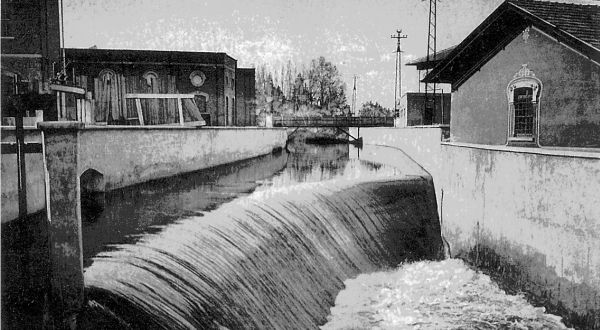Description

The power of water
The dam of Pontida Street, the highest barrier of Olona river that gives water to Olonella, creates a waterfall that shows all the power of the water but prevents the fish from rising. Fish are back from few years. At this point there were mills transformed into textile factories and, in the early twentieth century, the public bathrooms, which took water from the river.
Pontida street, with its bridge, divided
Bernocchi weaving factory from the Cantoni cotton mill.
Since 1772, on this stretch towards the former Cantoni
cotton mill, there has been the double mill "Salmoirago"
that milled grain for Archbishop's canteens of Milan. Around
1871 Eugenio Cantoni decided to buy and adapt many of the
existing mills on the course of Olona to exploit them as a
driving force, improving mechanical systems through
innovative gears and new iron blades.
The name "Olona" comes from the Celtic root "OL" which means
"magnus, validus" translated "great" in the sense of the use
that can be made of its waters. The dam on Pontida street,
the highest dam on the Olona river that gives water to
Olonella, creates a waterfall that shows all the power of
the water, but prevents the fish from rising. Fish are back
from few years.
The public baths were built on the left bank of the river in
the early twentieth century with a large outdoor pool, now
no longer existing, which took the water directly from the
river, and a series of indoor spaces for individual showers,
which now houses the headquarters of the CRI. The jump will
probably be used for the construction of a mini
hydroelectric plant, with an adjoining structure that will
allow the fish ladder, which is impossible today.
Deepening
Video
|
Audio |
E-Book |
Photo |
Other Links |


